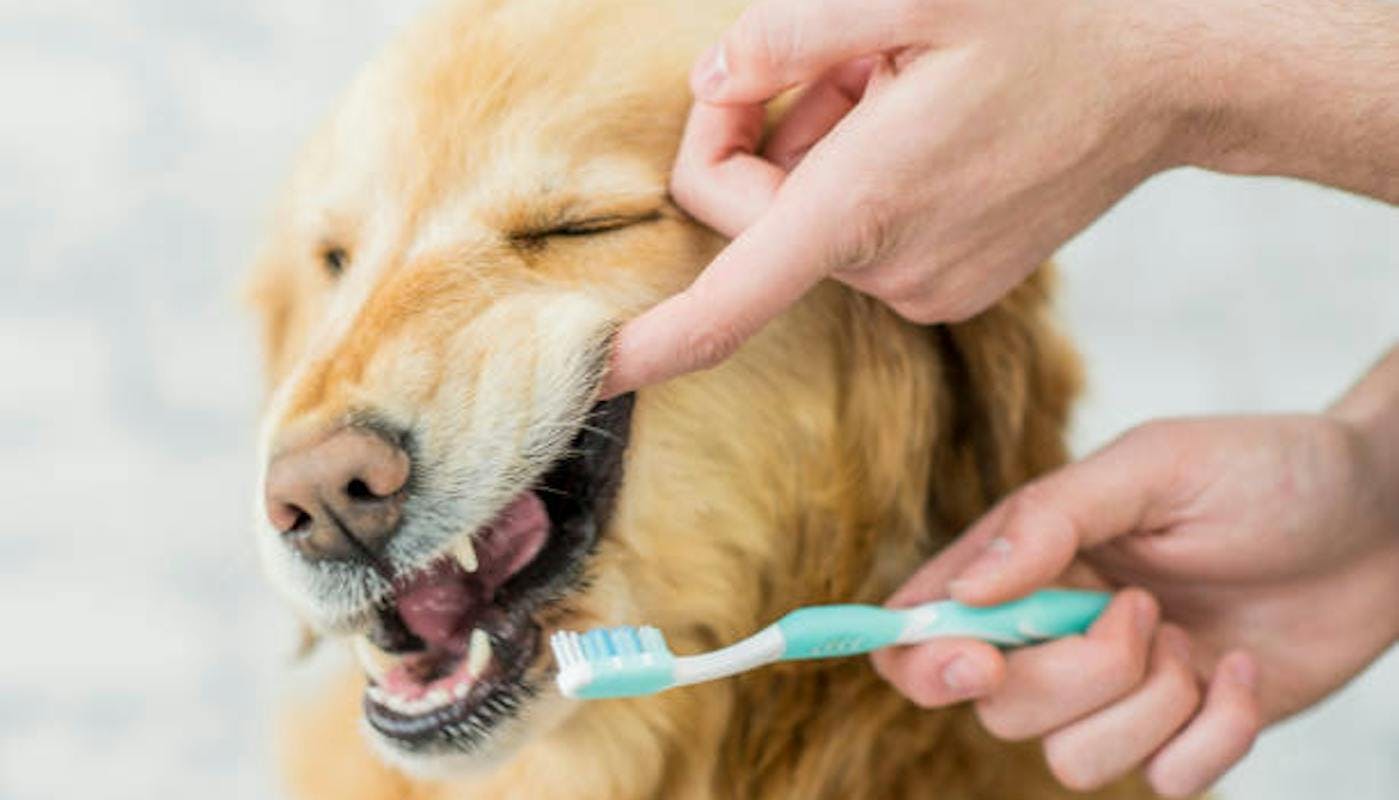How To Keep Your Dog’s Teeth And Gums Healthy
How To Keep Your Dog’s Teeth And Gums Healthy
Your dog’s oral health is as important as your own – we wouldn’t go weeks or even days without cleaning our teeth as we know it can lead to diseases as well as bad breath. But many dog owners don’t realize the key to keeping their dog’s teeth and gums healthy is to clean them almost as often as our own.
In this article we’ll explain how often you should clean your dog’s teeth, other methods for keeping their teeth and gums healthy, and the importance of good oral health for your dog’s overall wellbeing.
Why Should I Clean My Dog’s Teeth?
If a dog’s oral hygiene is left unattended, it can lead to serious diseases including heart muscle damage, and kidney and liver failure. It can also lead to oral diseases that are linked to bad breath, poor health, and rotting teeth. In fact, the American Veterinary Medical Associationhttps://www.akc.org/press-releases/prevent-periodontal-disease-in-your-dog/ found that 80% of dogs show signs of periodontal diseases by the age of three.
Ideally, your dog’s teeth should be cared for every day but if you don’t have time to do this then once per week can keep their mouth in good condition. At first, most dogs don’t like having their teeth cleaned. But like children, it’s something they grow used to and won’t fight off for long – and making it part of their regular routine will mean they settle into it more quickly.
How To Brush A Dog’s Teeth
Make sure you use a specific dog toothbrush and toothpaste, as their mouths are a different shape to our own and our toothpaste contains ingredients that are toxic to dogs. Dog toothpaste even comes in tasty flavors like beef and chicken to help make the experience more enjoyable for them.
To get your dog used to the taste of their toothpaste, you could add it into their food for a few days before brushing or get them to lick some off your finger as a ‘treat’. Some dogs also find toothbrushes distressing so you could try using your fingers to get them used to the feeling first. When you eventually do use a toothbrush, simply lift your dog’s lip and brush in a circular motion. You don’t need to hold their mouth open the whole time.
Other Ways To Clean Your Dog’s Teeth
Many dog chews are designed to clean your dog’s teeth as they enjoy their treat. Dental chews come in different sizes, and are usually made with ridges that get into the gaps between their teeth. They can help to reduce plaque and tartar for a cleaner look and better breath. However, many of the more popular treats designed to help clean dogs teeth, have little to no nutritional value. Many are primarily made up cereals and derivatives, which probably taste good but it’s the nutritional equivalent of giving your dog a lollypop to chew on! Luckily, as healthy dog treats become more and more popular, you can find dental chews that aren’t quite as unhealthy now.
Chewing toys in general are a good way to keep your dog mentally stimulated while they play with a toy that scrapes the plaque and grime from their mouth – and they don’t even realize they’re having their teeth cleaned!
For a quick fix, some oral sprays are available to improve your dog’s breath but these don’t have any of the cleaning benefits of toothpaste or chews. You can also book an appointment with a veterinary dentist for a professional clean.
Does A Dog’s Diet Affect Their Oral Health?
As humans, we understand that eating a lot of sugary foods contributes to the build-up of plaque on our teeth. And since dogs don’t treat themselves to cake and chocolate, you might be mistaken into believing that their teeth are free from the problems associated with a poor diet.
Although it’s true that dogs’ teeth do not decay due to sugar like humans’ do, there are other nutritional factors to bear in mind when considering your dog’s dental health. The texture of a dog’s food can help maintain a healthy mouth, stimulate the production of saliva, and even help with tooth cleaning which has led some vets to recommend a dry or mixed-texture diet for dogs.
Front of the Pack’s air-dried food has the texture of jerky – it’s soft and chewy, but tough enough that it will help keep your dog’s teeth and gums strong while they eat. It’s also made with 100% raw protein and natural ingredients, all carefully selected by vets, so you can trust that their overall health will be supported.
Know The Signs Of Oral Disease In Dogs
Some signs of dental problems in your dog include bad breath, swollen or red gums, broken or discolored teeth, and changes to their eating habits.
You should also be aware of tartar – a calcified deposit that builds up on the teeth and leads to disease. Plaque, on the other hand, is a sticky build-up that can lead to rotting. And if you notice your dog has inflamed gums with a thin red line, they could be suffering from gingivitis.
If you’re concerned that your dog does have dental issues, you should consult your vet immediately. They will be able to recommend dietary changes, new cleaning routines, or necessary medications.
